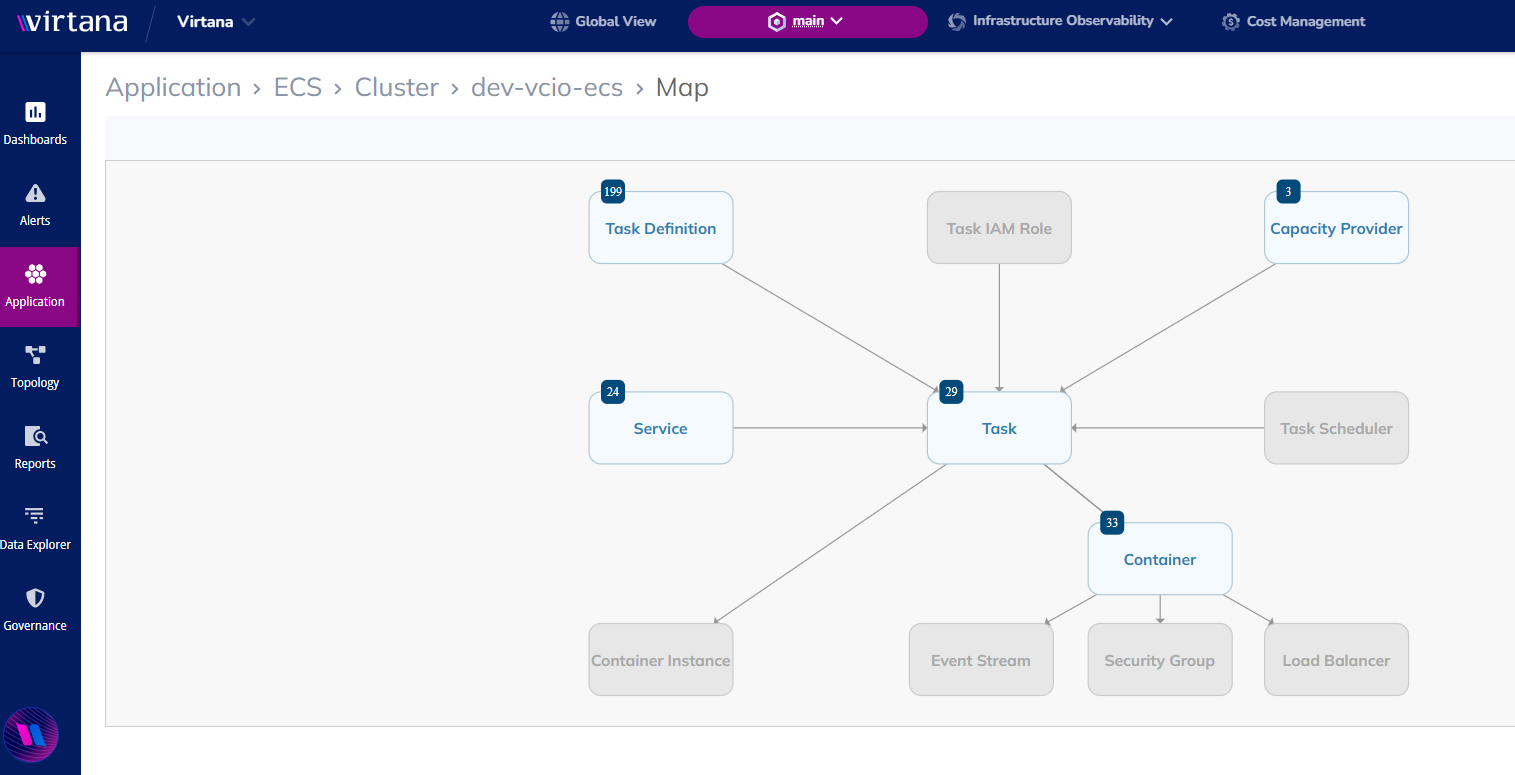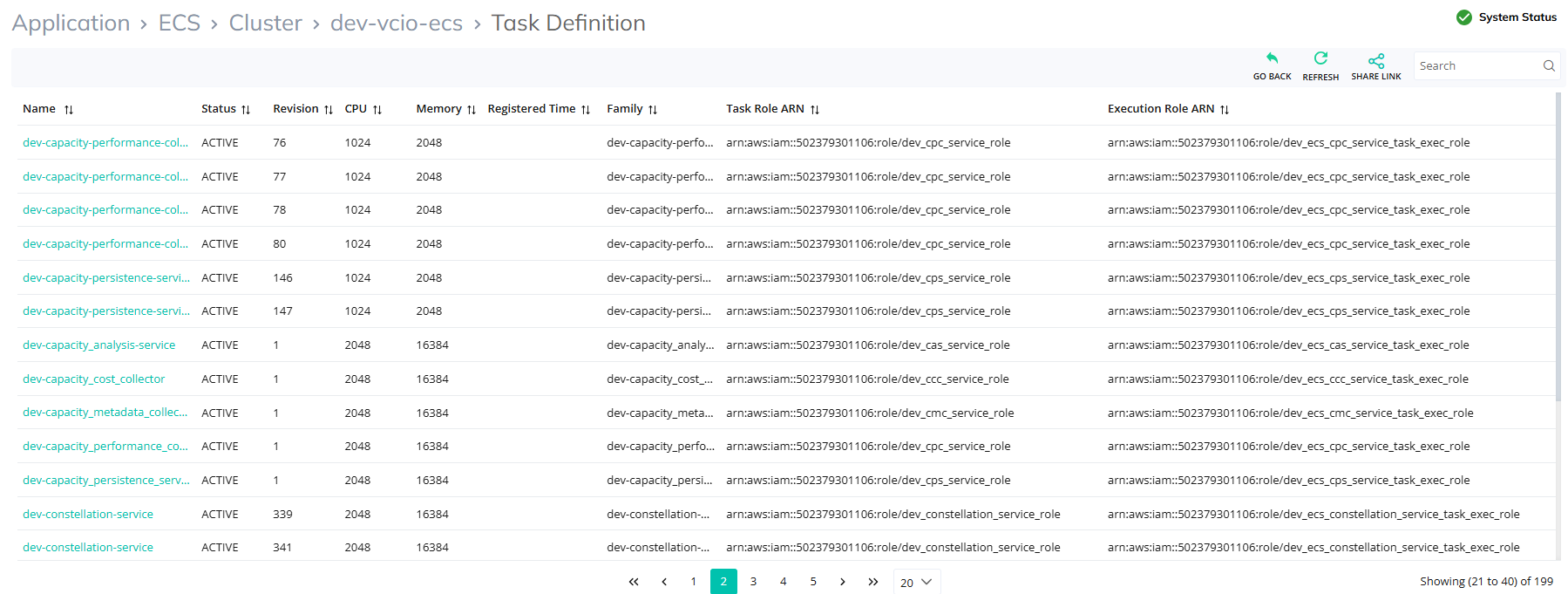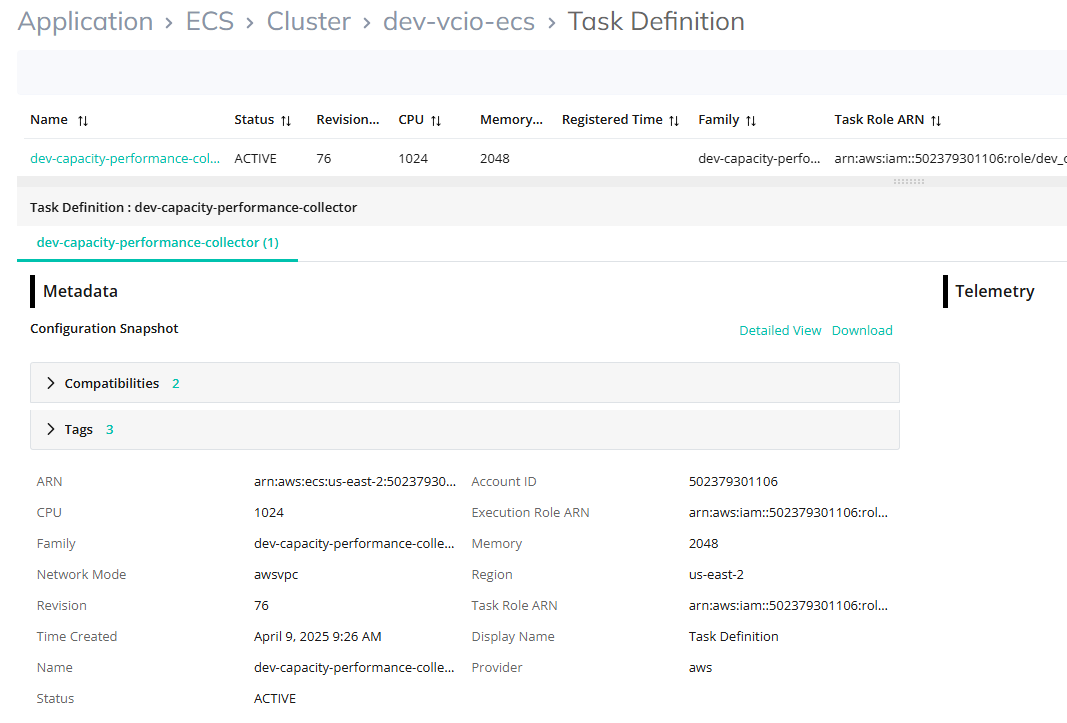Cluster
The cluster map visually represents the relationship of different ECS entities, providing a clear understanding of the architecture. It visualizes the relationships and dependencies between various components within an ECS cluster, helping you understand how different elements interact and impact each other.

The map describes the following core components:
Task Definition: Defines the blueprint for your application, specifying details like the Docker image to use, CPU and memory, and other parameters.
Service: Maintains a required count of tasks and handles task placement and scaling.
Capacity Provider: Determines the infrastructure on which tasks run, allowing for flexible scaling and cost optimization.
Task: Represents an instance of a task definition running on a container instance.
Container: A lightweight, stand-alone, executable package of a piece of software that includes everything needed to run it.
The map also shows other crucial elements that interact with the core ECS components:
Task IAM Role
Task Scheduler
Container Instance
Event Stream
Security Group
Load Balancer
Note
The component's operation is based on the cluster configuration.
Click on the Task Definition to list of task definitions configured in the cluster.

Click on any entity to display the details of the Metadata and Telemetry of the Task Definition.
You can view the configuration details and can also download the Detailed view.

A Configuration Snapshot under Metadata describes the various attributes, like:
Name
Provider
Status
Account ID
Under the Telemetry section, you can view details of Metrics and Logs.
Note
Similarly, you can also view the details of all the components for a cluster.